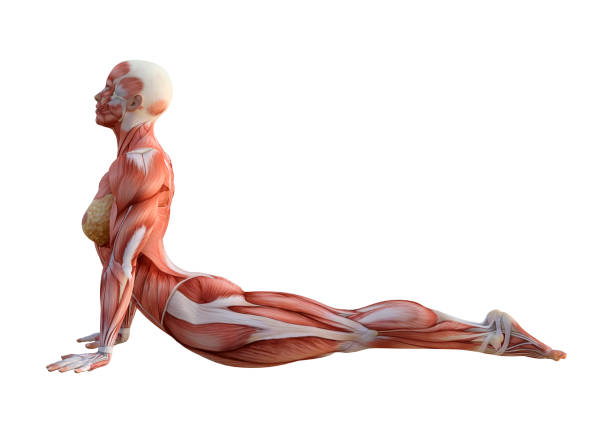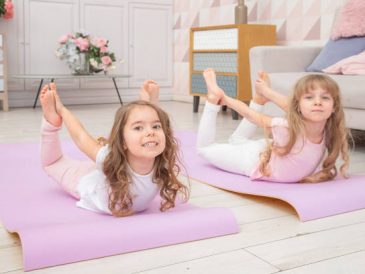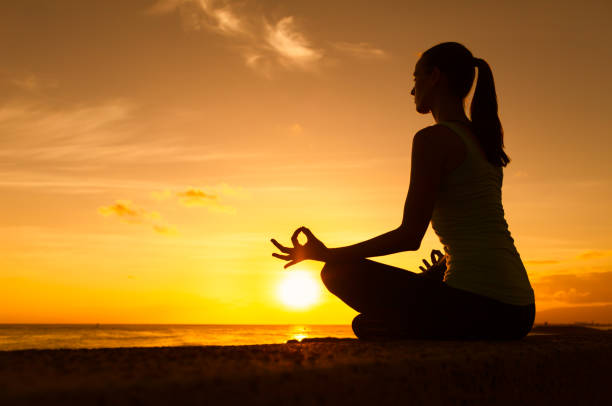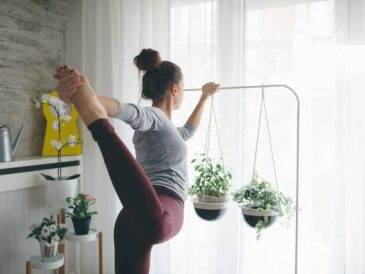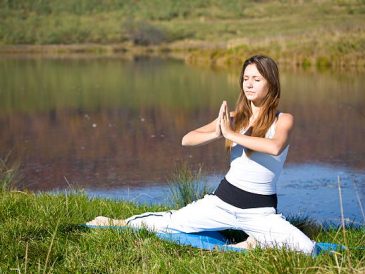The muscles, tendons, ligaments, and fascia of the hip are abundant and complex in their synchronicity. Yoga can work the hip rotation in a number of poses — both standing and seated.
Learn more about hip rotators and yoga anatomy.
General Function
The hip joint is formed by the upper thigh (the femur), which attaches to the acetabulum, the opening pocket of the lower pelvis. Ball-and-socket joints have a full range of movement: forward, reverse, sideways, and rotational.
Hip joints help you bend forward, lift your legs to run and walk, and straighten them out to lie down.
Anatomy of the Hip
Amazingly, many muscles work together to allow hip movement. The hip is where two of our largest bones, the pelvis (and femur), meet. The pelvis supports our entire upper body weight.
Gluteal Muscles — Muscles of the Buttocks There are three on each side.
Muscles of the Inner Thigh. There are five on each side.
The Iliopsoas muscle begins at the lower back and connects with the upper femur. There is one on each side.
Hamstring Muscles — Muscles of the back of the upper leg. There are three on each side.
Quadriceps muscles — muscles on the front of the upper leg. There are four on each side.
Lateral Rotator muscles — deep hip muscles. There are six on each side.
Each of these groups is usually responsible for multiple types of movement.
Movements of the hip
Adduction – Bringing the legs closer together. This motion is provided by the muscles of the gluteals and lateral rotators, as well as adductors. It can be hard to determine which muscle (or ligament or tendon) is the cause of an inner thigh injury because so many are working together. Standing poses such as Mountain will make you feel your adductors at work. Poses that will stretch your adductors: Butterfly, Head-to-Knee Pose.
Abduction — Movement away from the middle line or separation of the legs. The muscles of the gluteals, lateral rotators, and hip flexors create this motion. If your butts are overworked, it will be difficult to complete poses like Warrior II and Wide-Legged Forward Fold.
Flexion—Bending forward with the hips. The tensor faciae latae muscle, the iliopsoas, and some adductors are responsible for forward folding. The hamstrings must also be lengthened (and not contracted) to allow the folding to occur. Every time we sit, our hips flex.
Extension is the straightening of the hips, which involves the gluteus maximus and hamstrings. When we stand up straight, we extend the hip joints. We also do this when we lie down in Savasana.
Rotation: Both the lateral (outer or outer spiral of the leg from the hip joint) and medial (inner spiral leg from the hip joint) rotation. In poses such as Tree or Baddha Konasana (Bound angle or Butterfly Pose), this lateral motion can be called “peeling the hip”. The .” muscles that are involved in lateral movement are the adductors and deep lateral rotators, whereas the muscles engaged in medial motion are the glutes.
What to do to keep them safe during yoga practice
Lightweight training can strengthen weak muscles. Some machines work your quadriceps, then switch over to the machine next to it.
Props. Props. Props. If you have a tight muscle or a tender hip area, using blankets, blocks, and bolsters will help shorten your range. I’m thinking in particular of props used during hip openers like Half Pigeon Pose or Lizard pose.
Limit range of motion. — We often deepen poses to progress. If you have hip injuries or are currently experiencing one, you should only do 80% of poses that strain or sprain your hip muscles.
Just a Few (Some) Poses to Release Tight Hip Rotators
Mountain – Have you ever sat for so long (at work or watching TV?) You can also watch TV. Do your hips become too tight? Stand up! Mountain Pose Extend!
Seated Forward Fold – Many of us use this position to lengthen our hamstrings.
Cow-Faced Pose – This pose will help you release your abductors and improve hip rotation.
Half Pigeon – This pose does a lot for your hips. This pose, for instance, opens the adductors on one side and extends the hips on the opposite.
Eye of the Needle Poses — Similar to Half Pigeon, but gentler on the knees.
Tree Pose—This pose focuses on rotating the hips for the open and raised leg, as well as extension and strength in the standing leg.
Warrior 1 — The greater the stretch in the hip adductors, the more you will work the hip extenders and the back leg.
Warrior 2 — Works the hip flexors and hip extenders in the front leg. Also opens the adductors on the back leg.
The hip joint is complex. Listen to your body if you are injured. Seek professional help if necessary, but do not ignore it. Hip injuries can be extremely difficult to heal if your body is not given enough time to rest.
Keep your hips mobile and limber by stretching them and working them. Yoga can help you reach the entire hip range of motion and keep your hips hydrated.
